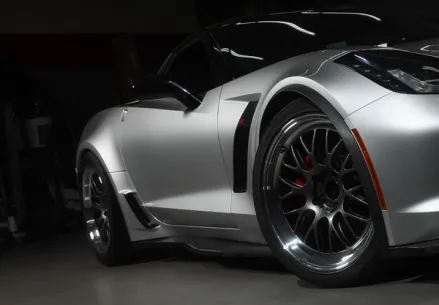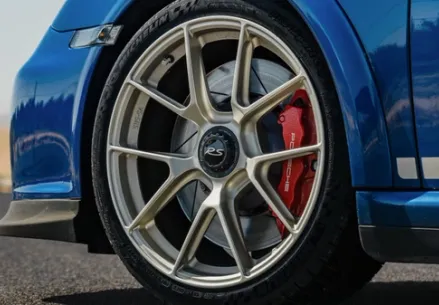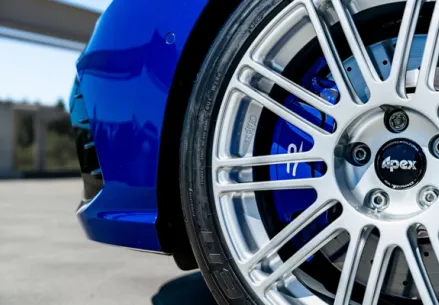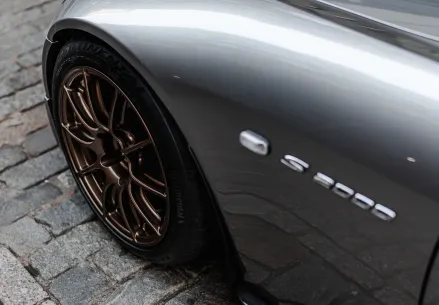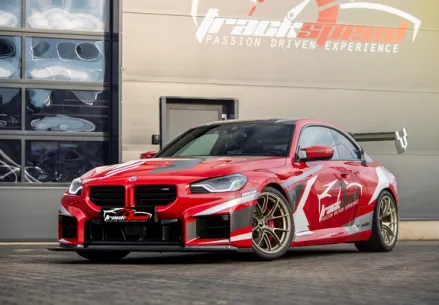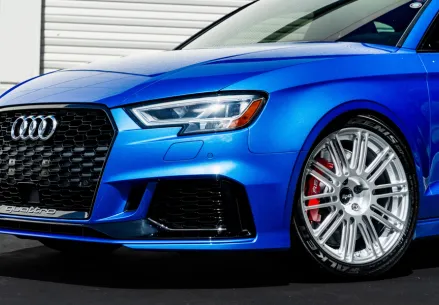
Tech Convo: Square vs. Staggered Wheel Setups
Article | 10/30/2019 by Tom Maloney
Updated on 02/06/2025
There is a lot of jargon and insider terminology to wade through when it comes to aftermarket and performance wheels, and there is no denying that all of that specialized lingo can make it a confusing space for new enthusiasts. For example, if it’s your first time buying high performance forged or flow-formed wheels, you may not know what a “square” fitment or a “staggered” fitment are, but understanding the difference between the two is an important part of making the right choice for your car and your performance goals. The good news is square fitments and staggered fitments are actually simple concepts, and their pros and cons are also really easy to understand. So, what’s the difference between the two?
What are square fitments?
A square fitment is one in which all four wheels have the same diameter, width, and offset. This also means all four tires are the same size.
In some rare cases, cars can require different offsets for their front and rear wheels to account for a specific vehicle’s design or brake/suspension geometry where it's not possible to fit the same offset on both the front and the rear of the car, but will still run four wheels with the same width and diameter. This is called a non-rotatable square fitment.
What are staggered fitments?
Staggered fitments feature four wheels of the same diameter. However, two of them – typically the drive wheels on rear-wheel-drive cars – are wider.
There are also variations on the traditional staggered fitment. For example, a double-staggered fitment will have rear wheels with a larger width and diameter, which is typically done to achieve a specific aesthetic or due to limited tire selection. There are also some applications that call for what’s known as a reverse staggered fitment, which uses front wheels with a larger width and/or diameter. This kind of setup is typically used to accommodate oversized front brake setups, or on front-wheel-drive drag cars, but is very rare.
Do square fitments or staggered fitments offer better performance?
The answer to this question has a lot to do with your specific car and its intended application. Drivetrain layout (ie: whether your car is front-wheel-drive, rear-wheel-drive, or all-wheel-drive), plays a major role, as does power output, your suspension setup, and your alignment settings. All of these factors contribute to whether or not your particular vehicle can take advantage of the distinct characteristics that these different fitment setups offer. However, there are a few basic benefits to each that can be applied pretty universally.
Reasons to run a square fitment
Cars that run a square fitment have improved tire life as you can easily rotate your wheels front-to-rear and left-to-right. For drivers that track their cars, certain track layouts will have a significant impact on tire wear. For instance, if a track has multiple high speed lefthand sweepers, the passenger side front tire is going to experience accelerated wear relative to the rest. With a square setup, drivers can monitor wear patterns across all four tires and rotate as needed as all four wheels and tires on the car are identical. For those that run a square setup on the street, it simply means you’ll save money as you’ll have to replace your tires less frequently.
Another benefit to running a square setup is its neutral handling quality. Having an equal tread width on the front and rear of the car means the car will exhibit more neutral and balanced handling characteristics. This reduces or eliminates a car’s tendency to understeer on a typical front-engine, rear-wheel-drive layout relative to a staggered fitment.
Reasons to run a staggered fitment
The primary reason to run a staggered fitment is for more rear traction. By fitting a wider tire on the drive axle of a rear-wheel-drive car, you'll have more available traction and better rear grip, which makes a big difference in higher-horsepower vehicles. This is most useful in straight-line acceleration from a stop and when exiting a corner.
Beyond getting a rear-wheel-drive car off the line quicker, a staggered setup has an undeniably cool look to it and many people simply love the aggressive aesthetic, especially when paired with a suspension setup that allows you to have both the front and rear wheels sitting flush with the fenders. There is also the question of retaining the car’s intended handling characteristics as most front-engine, rear-wheel-drive vehicles come with staggered fitments from the factory. By sticking with this layout when you upgrade your wheels, you can retain and accentuate (and even improve, if the wheels you choose are a legitimate performance upgrade) those handling characteristics.
Tags
 Tom Maloney
Tom MaloneyTom M.
Tom is a BMW Fitment Expert at APEX Wheels. Prior to joining the company in 2019, he worked for BMW of North America as Fleet Manager: Portland (OR) for the ReachNow car-sharing program, and as Warranty Administrator/Loaner Fleet Manager at BMW Portland. In addition, Tom has extensive training in BMW TSBs (Technical Service Bulletins) as well as in-depth knowledge of all BMW chassis and their wheel fitment options, with and without aftermarket brake and suspension upgrades. His high-performance driving experience includes autocross events in southern Oregon and track days at PIR in his 2004 E46 330i with 17x9 ET42 APEX ARC-8 wheels. Vehicles he owned prior to indulging his passion for BMWs include a 1989 Jaguar XJ6 and a 2006 S197 Ford Mustang. Fun Fact: Tom is a huge Formula 1 fan. Have questions about wheels for your BMW? Use our contact form and ask for Tom.
If you like cheap gear you will hate this newsletter.
